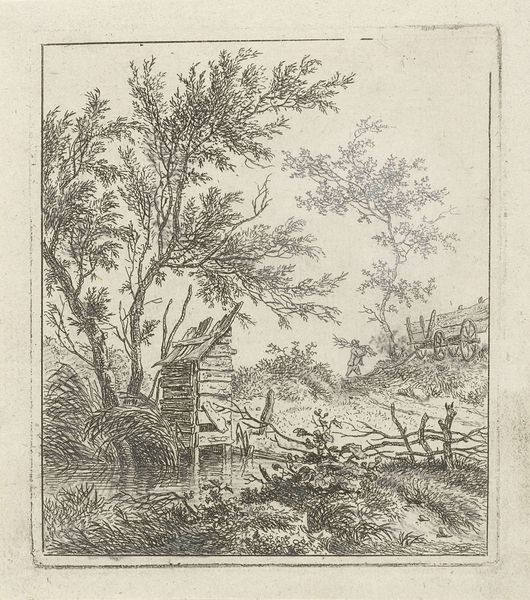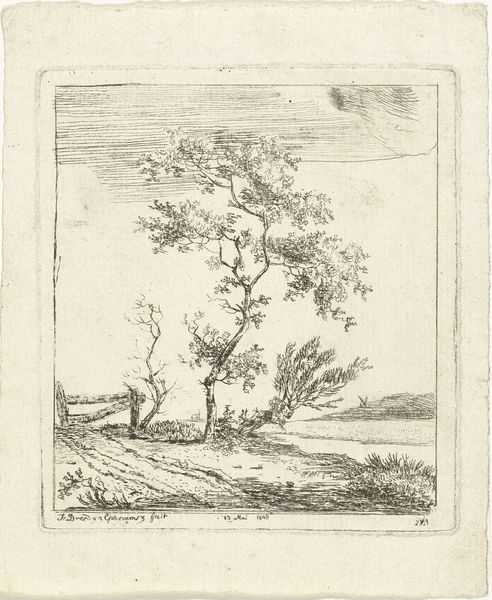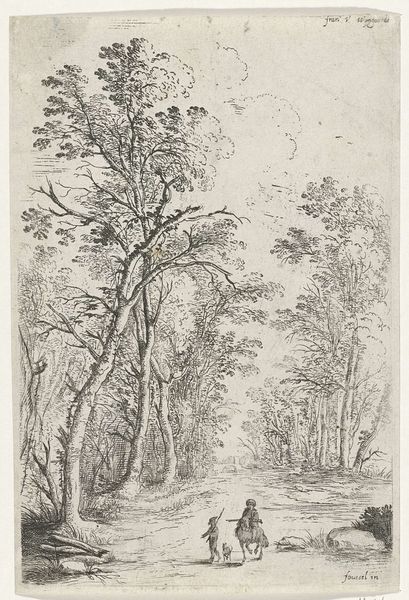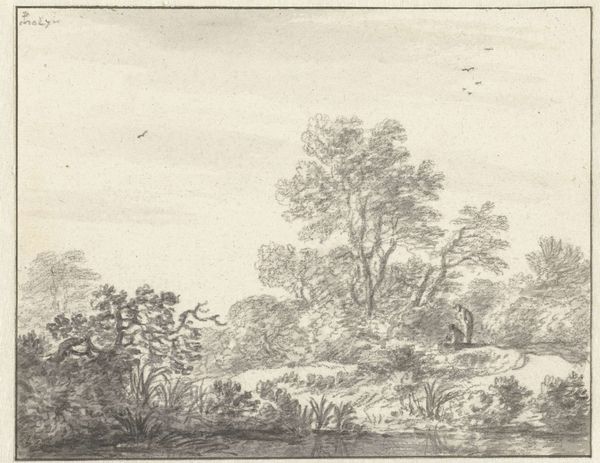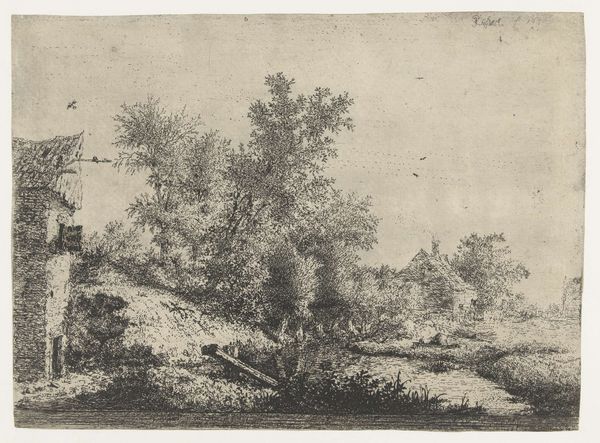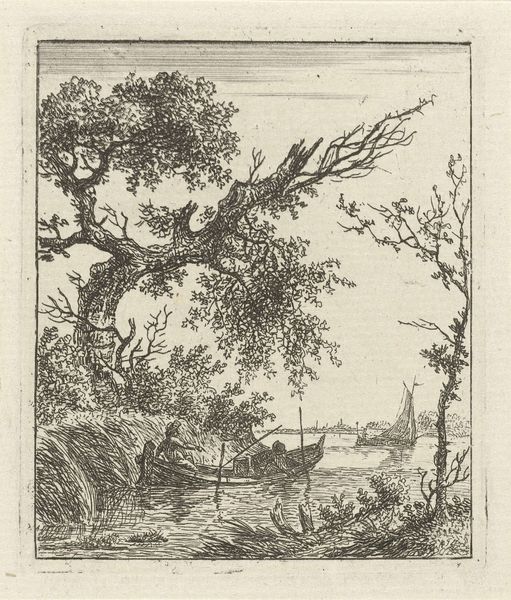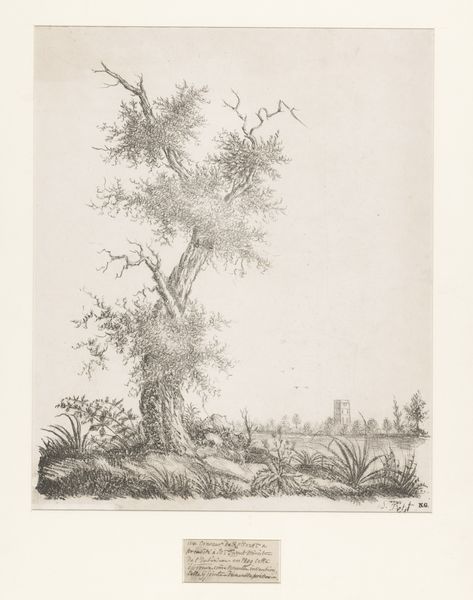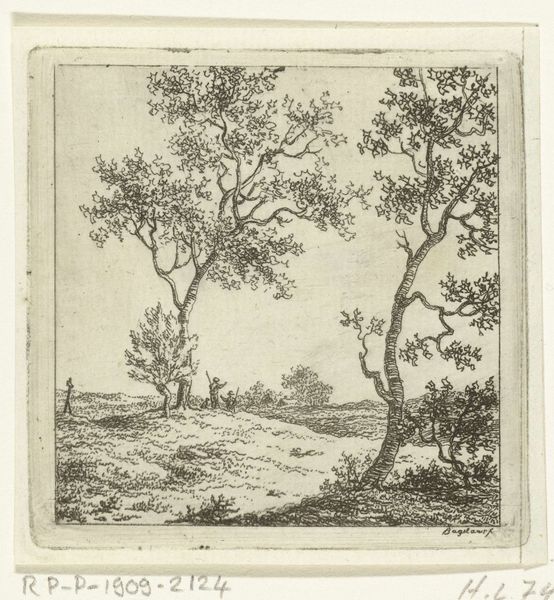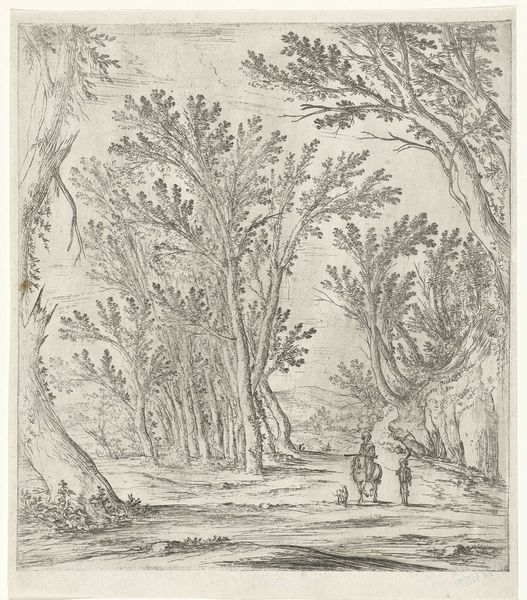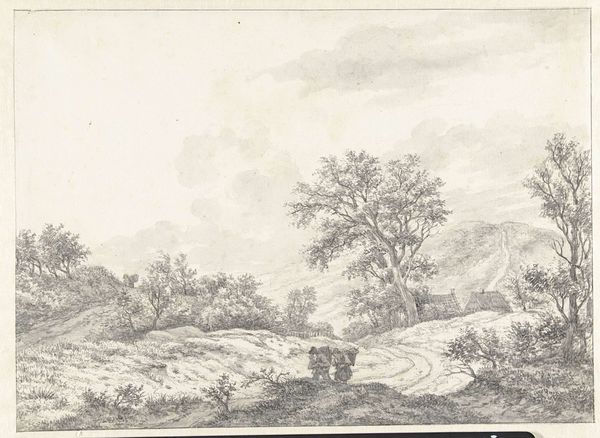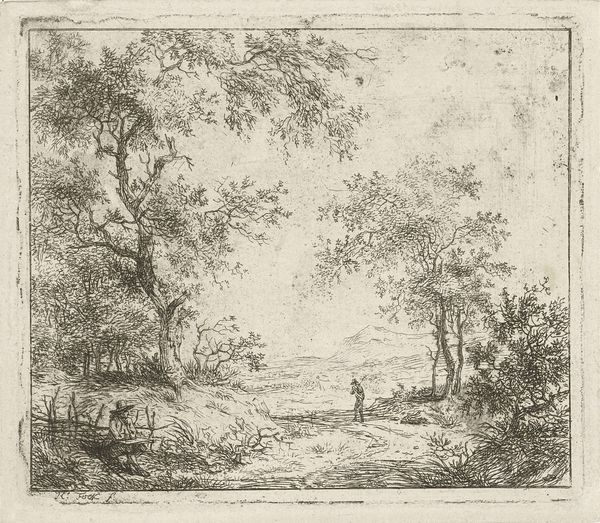
print, etching, engraving
#
dutch-golden-age
# print
#
etching
#
landscape
#
genre-painting
#
engraving
#
realism
Dimensions: height 80 mm, width 69 mm
Copyright: Rijks Museum: Open Domain
Curator: Hermanus Fock created "Draftsman among Willows" sometime between 1781 and 1822. This print, using etching and engraving techniques, now resides here at the Rijksmuseum. What's your initial response to it? Editor: A certain quietude strikes me immediately. The meticulous lines evoke a serene, almost melancholic atmosphere, wouldn't you agree? The composition, with its careful balance of open space and detailed foreground, certainly draws the eye inward. Curator: I find myself considering the identity of the draftsman within the socio-economic framework of that period. Was Fock commenting on the solitary nature of artistic creation, or perhaps on the changing relationship between humans and the landscape as industrialization began to creep into the Dutch countryside? Editor: Undoubtedly relevant socio-historical context. However, let’s appreciate how the stark contrast accentuates the willow trees, their forms almost anthropomorphic. It’s the visual interplay of light and shadow, this push and pull between foreground and distant horizon that defines its impact, wouldn't you say? Curator: Of course, the landscape holds significant weight. I am thinking how the lone draftsman might embody a larger dialogue, between artistic expression and the dominant agricultural structure that defined labour and land ownership at that time. The willows themselves might symbolize resilience, bending but not breaking in the face of social transformation. Editor: A powerful interpretation. But notice the etcher's meticulous approach. The very materiality of the print, with its finely engraved lines, calls attention to the act of artistic creation itself, a meditation on observation and representation. The almost symmetrical mirroring in the trees gives off an appealing balance, even if the scene portrays anything but balance! Curator: A valid formal analysis, and it's key that we don’t decouple aesthetics from societal context. Viewing it through today's lenses allows us to examine not just artistic style, but broader ideas surrounding artistic labour. Editor: Perhaps the beauty lies in the tension between these perspectives, each illuminating different facets of the work. It's a wonderfully deceptive print, revealing layer upon layer as you study it. Curator: Absolutely. It offers a complex commentary. Examining it is to challenge our notions of rural representation in Dutch art. Editor: Agreed. It's a testament to the power of close visual analysis interwoven with understanding deeper social contexts.
Comments
No comments
Be the first to comment and join the conversation on the ultimate creative platform.


